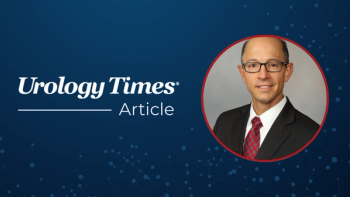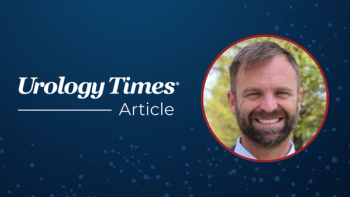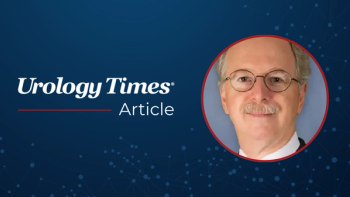
Urologists discuss managing NMIBC amidst BCG shortages
Key Takeaways
- NMIBC management is evolving with novel immunotherapies and gene therapies, necessitating updated clinical pathways and enhanced training for urologists and oncologists.
- BCG shortages are prompting interest in alternative treatments and clinical trials, emphasizing the need for personalized risk stratification and adherence to guidelines.
A major challenge addressed in the Clinical Forum was managing BCG shortages and the implications for patient care.
On May 21, 2025, Urology Times® hosted a Clinical Forum program in Lone Tree, Colorado. At the event, urologists examined the shifting landscape of non–muscle-invasive bladder cancer (NMIBC) management, focusing on the integration of novel immunotherapies, the impact of BCG shortages, and the evolving roles of urologists and medical oncologists. As new agents like sasanlimab and gene therapies such as nadofaragene firadenovec-vcng (Adstiladrin) gain traction, participants emphasized the need for updated clinical pathways, enhanced training, and a collaborative approach to optimize outcomes. Suzanne B. Merrill, MD, FACS, a urologic oncologist with Colorado Urology in Lone Tree, served as moderator for the discussion. What follows is a summary of this discussion.
This summary was generated by artificial intelligence and edited by humans for clarity.
This Clinical Forum centered on the evolving landscape of NMIBC management, emphasizing current challenges, new therapies, and the coordination required between urologists and medical oncologists. The participants explored various aspects of diagnosis, treatment decision-making, and the integration of immunotherapies, highlighting the complexities many practices face as they adapt to emerging modalities.
The dialogue began with an overview of the current state of NMIBC treatment, noting the reliance on established intravesical therapies like BCG. Participants acknowledged the standard approach involves performing a transurethral resection of the bladder tumor (TURBT), followed by intravesical therapy, with immediate considerations for subsequent treatments based on patient response and tumor pathology. The discussion revealed that practices vary significantly, with some urologists preferring to proceed with TURBT and delaying cystoscopy or biopsy until a later date, especially in cases where the patient is anxious or tumor characteristics suggest the need for further evaluation.
A major challenge addressed in the Clinical Forum was managing BCG shortages and the implications for patient care. Several speakers pointed out that BCG remains a cornerstone of therapy, but supply issues force clinicians to reconsider treatment plans, leading to increased interest in alternative treatments and clinical trials. The conversation highlighted that practices are examining when and how to switch to other options like chemotherapy, device-based treatments, or early enrollment in clinical trials utilizing novel immunotherapies. The importance of personalized risk stratification was emphasized, with guidelines such as National Comprehensive Cancer Network (NCCN), European Association of Urology, and the American Urological Association being referenced as tools to aid decision-making. Participants generally favored the NCCN guidelines for their clarity and ease of use in clinical practice.
The role of urologists vs medical oncologists in administering immunotherapy treatments emerged as a significant theme. There is an ongoing discussion about whether urologists should take expanded responsibility for delivering immunotherapies, especially subcutaneous (sub-Q) or intravesical treatments, or whether such procedures should remain under the purview of medical oncologists. Some participants expressed confidence in urologists managing certain immunotherapies, citing the increasing familiarity with these agents and the potential for integrating them directly into urology clinics. Others highlighted concerns about the complexities pertaining to adverse event (AE) management, emphasizing that appropriate training and collaboration are essential.
Within this context, specific treatments such as sasanlimab were discussed. Sasanlimab, a PD-1 inhibitor, was referenced in relation to clinical trial data comparing its efficacy with BCG. The data indicate that sasanlimab, when combined with BCG induction and maintenance, can significantly reduce recurrence rates of high-grade tumors, with a more than 50% decrease in recurrence in some studies. However, the benefit appears to be more pronounced when combined with maintenance therapy, underscoring the importance of adherence to treatment protocols. The participants noted that although sasanlimab shows promise, more data are needed to fully understand its role in clinical practice, and the decision to incorporate it depends on ongoing research outcomes.
Training and competency development were also major focal points, particularly as newer therapies become more commonplace. The participants discussed the current gap in resident education regarding immunotherapies, especially given the rapid introduction of these agents into practice. There was concern that with overlapping roles and a blurry boundary between specialties, residents may not be receiving adequate training for managing complex treatments such as systemic immunotherapies or intravesical agents beyond BCG. The need for clearly defined roles and collaborative care pathways emerged as crucial to ensure safe and effective treatment delivery.
Another aspect of the discussion addresses the role of new FDA-approved therapies such as nadofaragene firadenovec-vncg, a gene therapy for bladder cancer that received approval in 2022, with availability only materializing in 2024 due to supply chain issues. The participants noted that these emerging treatments will add further options for bladder-sparing approaches, expanding the therapeutic landscape beyond traditional intravesical agents. The practical considerations of implementing these therapies, such as infrastructure requirements and the need for infusion capabilities, were acknowledged as potential barriers for some practices.
The participants also considered the future landscape of urologic training, emphasizing that as new therapies become more integrated into clinical practice, training programs will have to adapt. There was general consensus that practices will need to develop protocols for incorporating immunotherapies, including patient selection criteria, treatment pathways, and AE management. The importance of interdisciplinary collaboration was reiterated, with suggestions that coordinated efforts between urology and oncology will be necessary to optimize patient outcomes.
In conclusion, the Clinical Forum underscored the ongoing transition in NMIBC management driven by the introduction of immunotherapies and novel agents such as sasanlimab. Although traditional treatments like BCG continue to form the backbone of therapy, supply issues, evolving guidelines, and the availability of new drugs are prompting a reassessment of clinical pathways. Careful patient selection, enhanced training, and collaborative care models will be vital for integrating these therapies effectively. The discussion reflected a recognition that the landscape is rapidly changing, and practices must remain adaptable to incorporate new evidence and improve patient care outcomes.
Newsletter
Stay current with the latest urology news and practice-changing insights — sign up now for the essential updates every urologist needs.


















